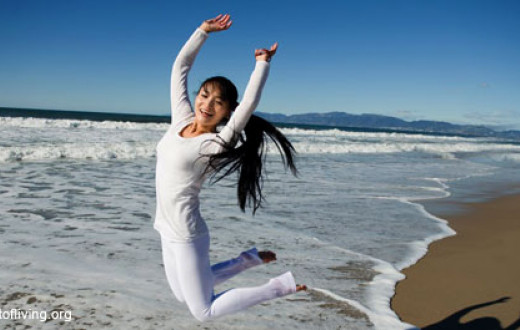The Srimad Bhagavad Gita is one of the earliest works on Yoga to outline four main paths to Yoga: Karma Yoga, Bhakti Yoga, Gnana Yoga and Ashtanga Yoga. The beauty of Yoga El Arte de Vivir is that it touches on each one of these paths
The Path of Karma Yoga
“Thy right is to work only, but never with its fruits; let not the fruits of action be thy motive, nor let thy attachment be to inaction. As the ignorant men act from attachment to action, so should the wise act without attachment, wishing the welfare of the world.”
As described in the Gita, the path of Karma Yoga refers to performing good actions in a spirit of selflessness and nonattachment; thereby enhancing ones evolution towards liberation. Karma Yoga is closely linked to Bhakti Yoga for without love and devotion it would not be possible to serve others selflessly.
The Path of Bhakti Yoga
“Those who worship the imperishable, the indefinable, the unmanifest, the omnipresent, the unthinkable, the immovable and the eternal, fixing their mind on God, ever steadfast and endowed with supreme faith, are the best in Yoga.”
As described in the Gita, the path of Bhakti Yoga refers to worshipping the divine with supreme single-hearted devotion, realizing that divine love is the sole object and goal of life. Devotion is the simplest way of realizing freedom from worldly bondage.
As described in the Gita, the path of Gnana Yoga refers to the path of Self Knowledge. To evolve in the self, one can find ultimate guidance from a master; where the journey of inquiry , extrapolated from our ancient scriptures, is consolidated into a living reality of practical wisdom.
The Path of Gnana Yoga
“The wise, ever steadfast in the knowledge of Self, excels. He gradually evolves and realizes the Self. He is exceedingly dear to Me and I am exceedingly dear to him. Such a great soul is very hard to find.”
The Path of Ashtanga Yoga
The forefather of Yoga otherwise known as “Patanjali” describes the path of Ashtanga Yoga as an eight-limbed approach for the well-being and purification of body, mind and soul. The eight-limbs consist of practising: social ethics, individual ethics, postures, breath control, discipline of the senses, concentration, meditation, and self-realisation or equanimity.

































